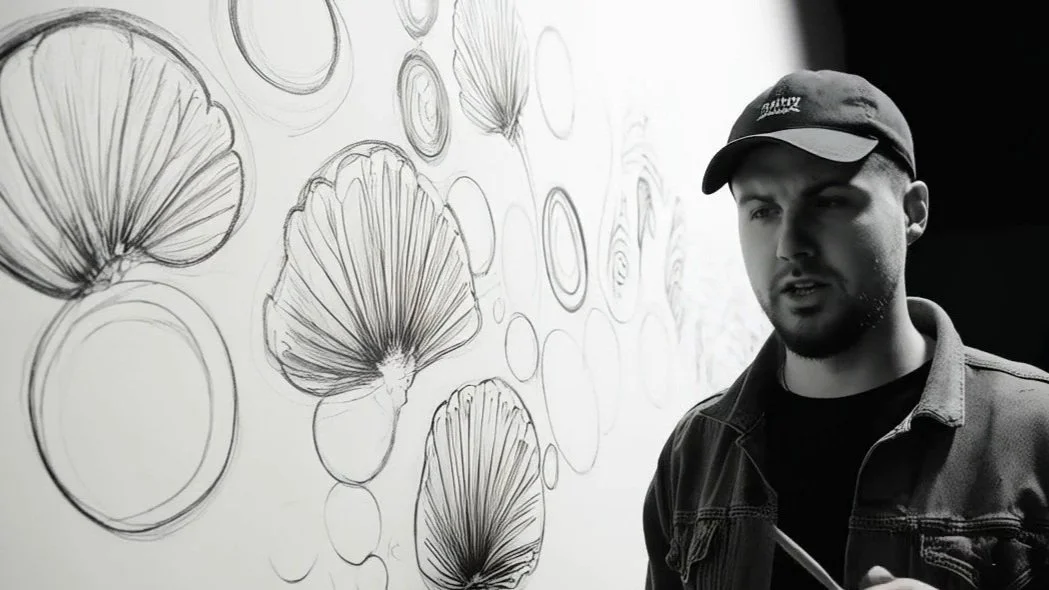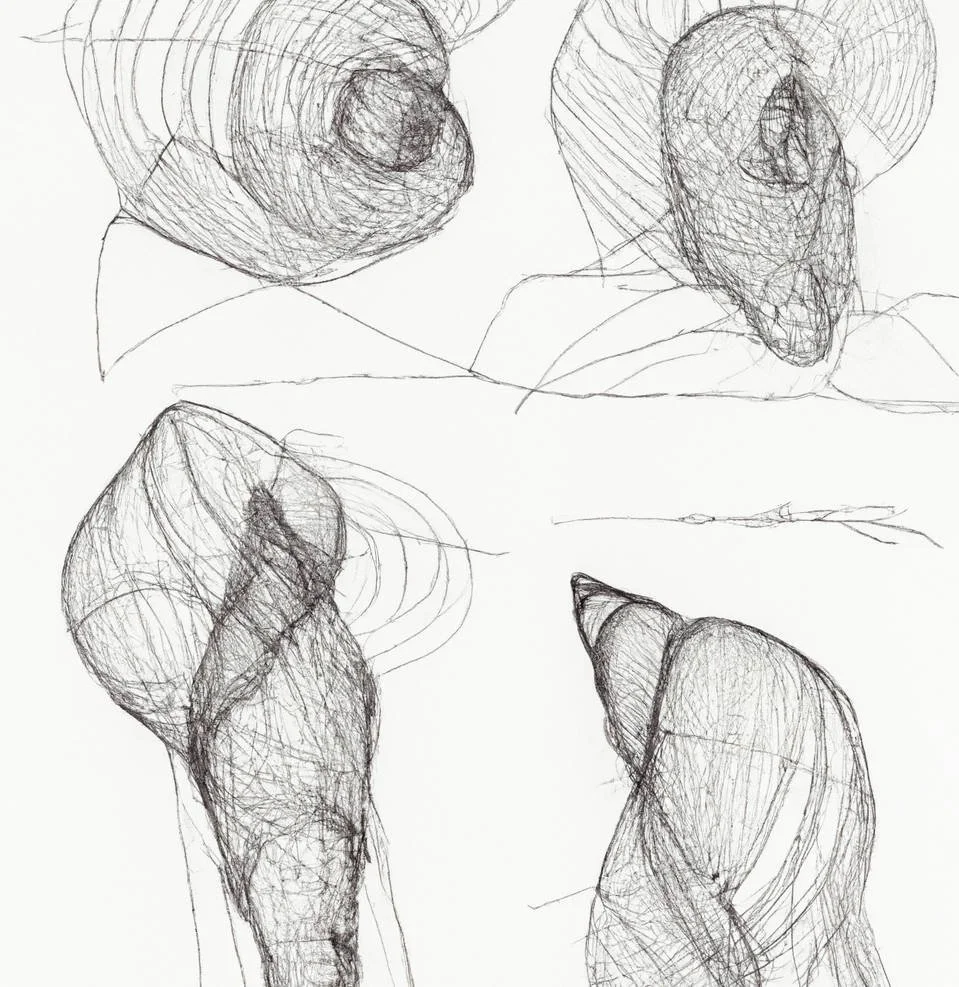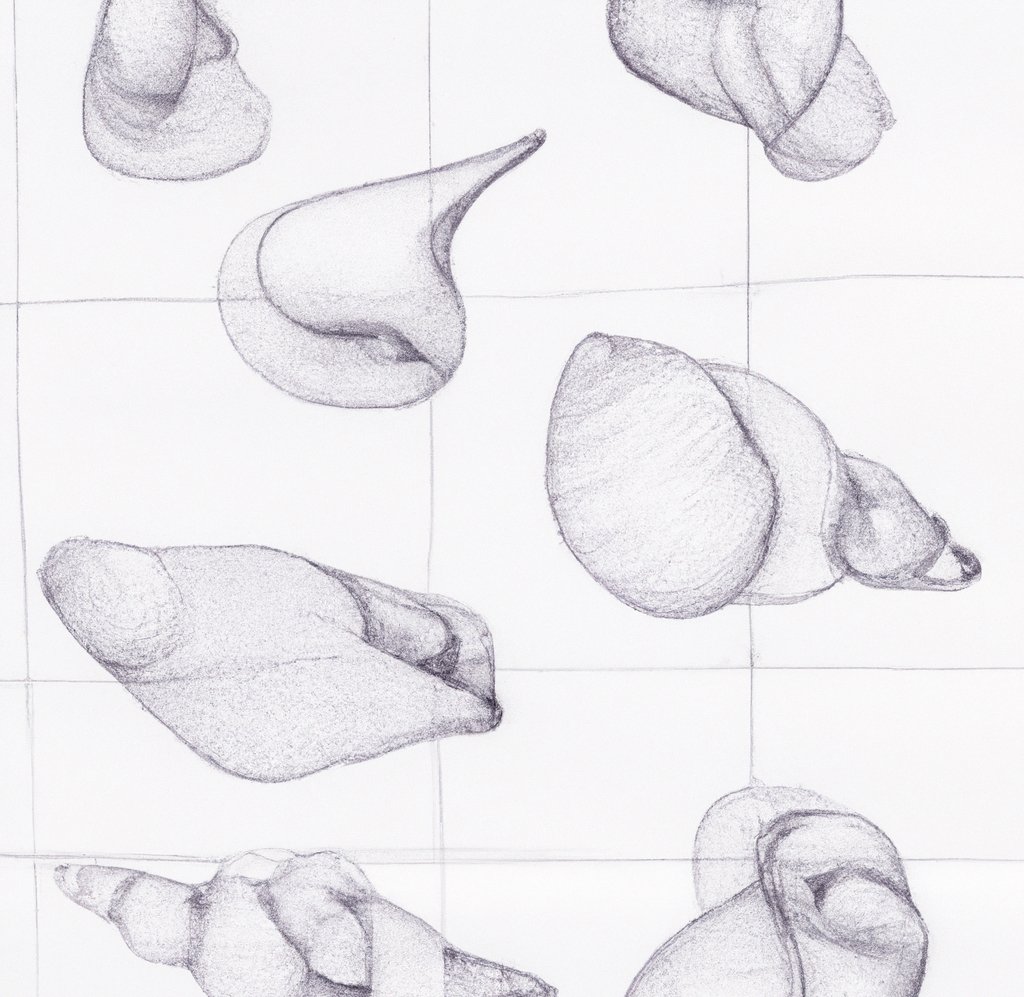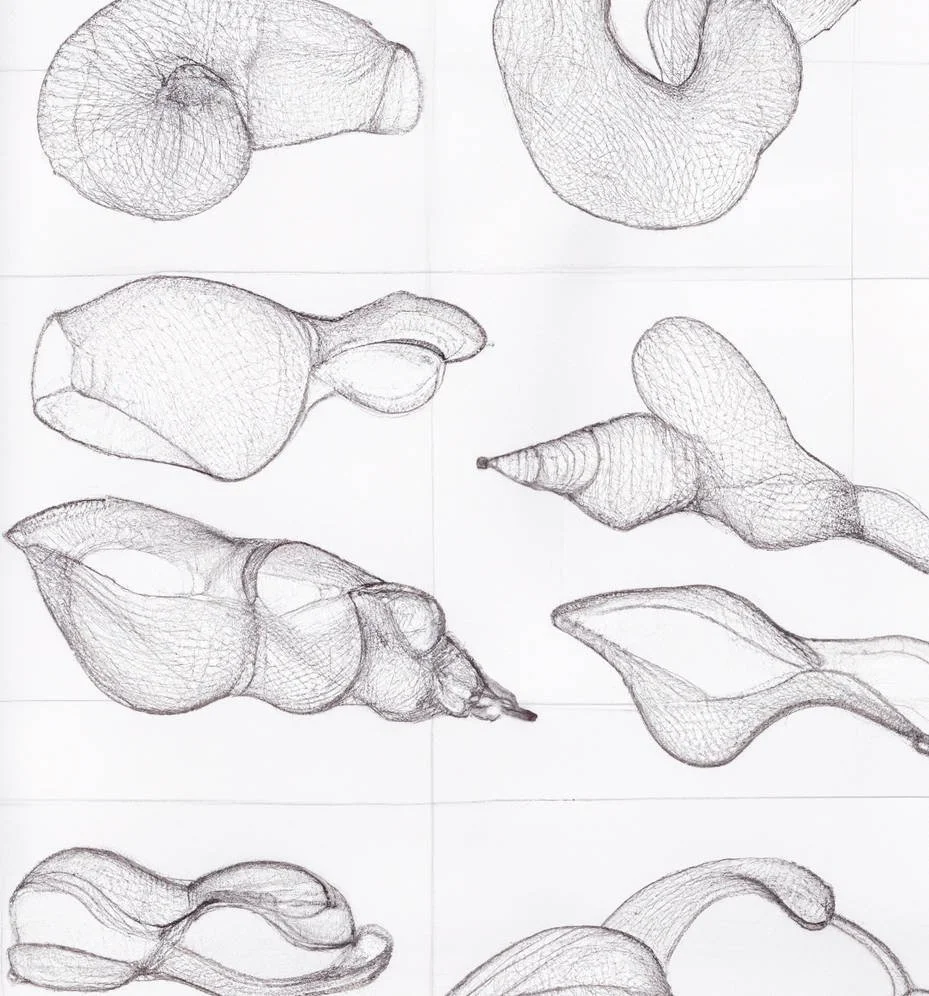Drawing Outside The Lines : A story of exploration and growth
Drawing has been the silent, steadfast companion in my life, a thread woven through every phase of my creative journey. From the first tentative marks of childhood to the complex orchestrated panels that inform my sculptures today, drawing has been both a tool and a sanctuary. It is not just a means to an end but a meditative practice, a way to find calm and clarity in the chaos. This blog post explores the profound role drawing has played in my life and work, from its earliest beginnings to its ongoing influence on my sculptures.
From a young age, drawing was my chosen form of expression, I was always surrounded by paper and pencils. It was more than a pastime—it was how I communicated, how I expressed my thoughts, and how I explored the world. I had a distinct dislike for the structured confines of colouring books or dot to dots and my drawings often spilled beyond the lines, breaking free and disregarding the boundaries. Drawing was my greatest lesson in life, open-minded exploration, teaching me early on the value of thinking outside the box and continuing to draw my own path.
As a young student studying ceramics, I was introduced to the structured approach of working with sketchbooks, where observation drawings and methodical explorations filled the front pages. Yet, I found myself breaking away from this structure, transforming the back of my sketchbooks into my own canvas for my own ideas and experiments. The sketchbook evolved from a traditional tool into an object of exploration, a sculpture in itself, with pages that folded out like a fan, they were torn and repasted and filled with my own narratives. This was a key evolution in my artistic journey, where the sketchbook became more than just a collection of drawings—it became a reflection of my desire to push boundaries and explore without constraints. The sketchbook also became a metaphor for my passion for sculpture, I found the idea of a closed sketchbook non sensical, I wanted the pages on the inside expressed outwardly. So my sketchbooks, transformed from closed and uniform, to torn, broken and became an object in themselves, they felt like a jack in the box about to explode.
Early years of studying sculpture at art school introduced me to the idea of automatic drawing and transitioning from sketchbooks to automatic drawing was a transformative step. By taking pages out of the sketchbook and creating a wall of drawings, I could see all my ideas together, breaking free from the confines of a closed sketchbook. This allowed me to visualise connections, patterns and rhythms across multiple drawings. It was a revelation that paved the way to automatic drawing. Automatic drawing involves freeing the mind, allowing the unconscious to guide the hand. The process begins by drawing repetitively, one after another, without overthinking. Over time, this recursive action becomes almost automated and the unconscious mind begins to influence the drawings. This technique allows for the emergence of ideas and patterns that might not surface through conscious effort, providing a fresh source of creativity. By trusting this process, I learned to tap into a deeper well of creativity, generating ideas I hadn't consciously considered.
The relationship between drawing and sculpture in my practice is one of harmony and companionship. Neither takes precedence over the other; instead, they exist as echoes, intertwined and mutually dependent. Drawing provides the initial spark, a tiny fragment of an idea that often transforms into the essence of a sculpture. These fragments—small, intuitive marks—find their way into the three-dimensional space, shaping the rhythm and form of the final piece. In turn, the act of sculpting informs my drawings, enriching them with new textures, perspectives, and possibilities. The process of creating both is remarkably similar, rooted in an intuitive flow where the conscious and unconscious minds collaborate. Sculpture and drawing are not separate disciplines in my work; they are inseparable companions, each amplifying the other’s voice.
Drawing is more than just a creative act; it serves as a meditative practice and a lifelong companion. The repetitive, immersive nature of drawing brings me a deep sense of calm and clarity. It's a way to quiet the conscious mind and let the unconscious flow freely, bridging the gap between logic and intuition. In this process, I find a unique dialogue between the conscious, pragmatic part of my mind and the unconscious, intuitive self. Drawing allows me to reconnect with a pure, child-like state of mind, unshaped by societal constraints. It’s this profound connection that makes drawing not just a tool for creativity, but a sanctuary for the mind and spirit. It’s where I can always find peace, clarity, and a deep sense of trust in the process.
Drawing, at its core, is more than just a skill or a hobby—it’s a profound way of connecting with ourselves and the world around us. It’s a process that can offer immense benefits for anyone’s mental health and well-being. The act of putting pencil to paper, even without a clear purpose, can be meditative, calming, and liberating. It allows us to express emotions, work through challenges, and find clarity in chaos.
Overcoming the “blank page syndrome” is not just a creative hurdle; it’s a metaphor for life. Facing a blank page encourages us to let go of our fears of failure and imperfection, to trust the process and to embrace exploration. It’s an exercise in self-discovery—a way to communicate with our unconscious minds and tap into a pure, unfiltered form of expression.
But drawing isn’t just for artists. It’s a universal language we all spoke as children, long before words could fully express our thoughts. Children draw instinctively, fearlessly, without concern for rules or judgment. And then, for most of us, this natural act fades away as we grow up. Why do we stop? Is it because we start to compare ourselves to others, or because society shifts our focus to more “practical” pursuits? Whatever the reason, the loss is significant, because drawing is not just about creating—it’s about being present, exploring and understanding.
So, I leave you with this question: What is drawing to you? Is it a forgotten childhood joy, a tool for relaxation, or something you’ve never considered picking up? Drawing, like any creative process, holds the potential to transform how we see and feel about the world. It invites us to slow down, reconnect with ourselves and embrace the beauty of imperfection. Perhaps it’s time to revisit that blank page and let your lines tell their story.









